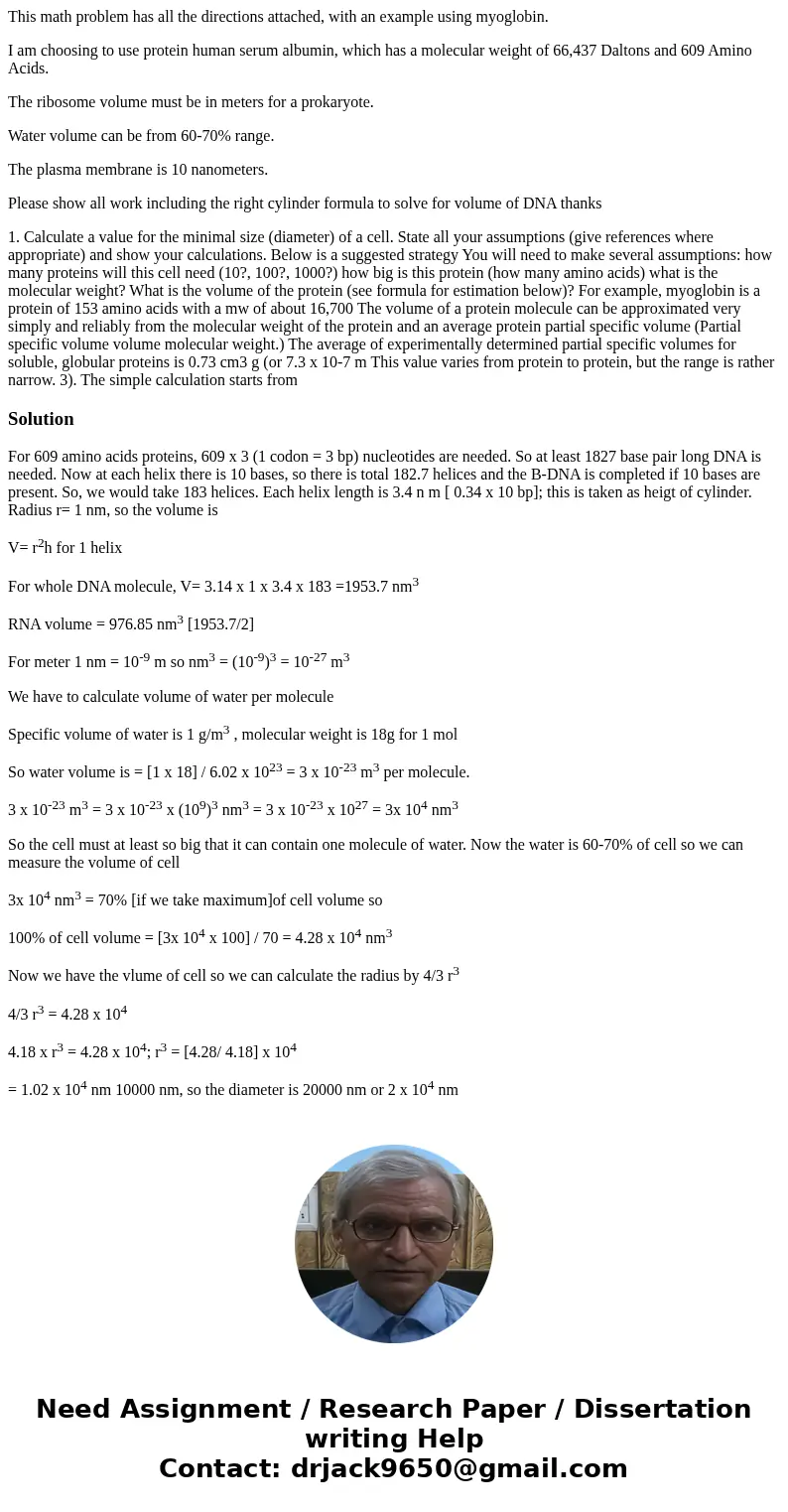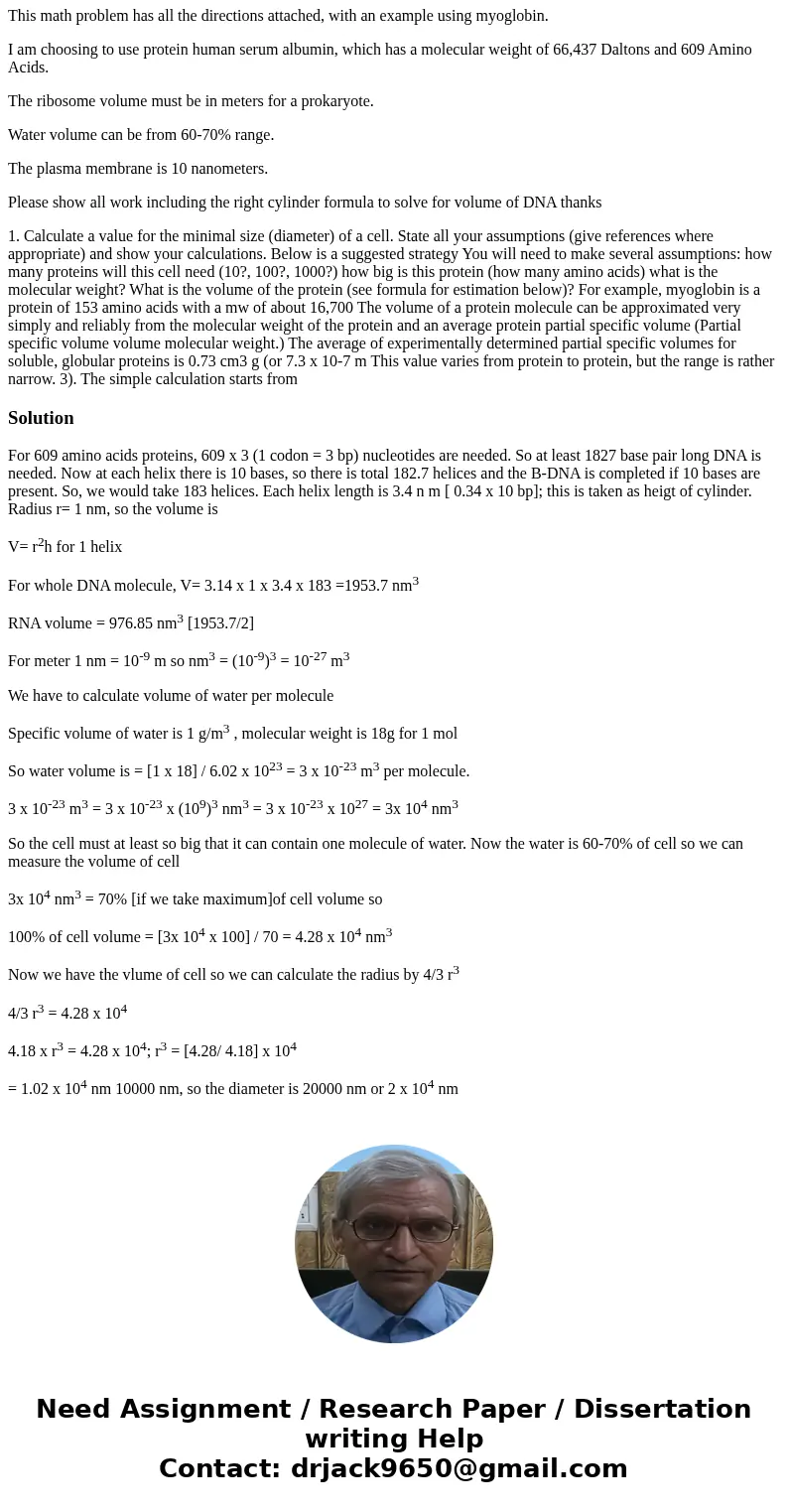This math problem has all the directions attached with an ex
This math problem has all the directions attached, with an example using myoglobin.
I am choosing to use protein human serum albumin, which has a molecular weight of 66,437 Daltons and 609 Amino Acids.
The ribosome volume must be in meters for a prokaryote.
Water volume can be from 60-70% range.
The plasma membrane is 10 nanometers.
Please show all work including the right cylinder formula to solve for volume of DNA thanks
1. Calculate a value for the minimal size (diameter) of a cell. State all your assumptions (give references where appropriate) and show your calculations. Below is a suggested strategy You will need to make several assumptions: how many proteins will this cell need (10?, 100?, 1000?) how big is this protein (how many amino acids) what is the molecular weight? What is the volume of the protein (see formula for estimation below)? For example, myoglobin is a protein of 153 amino acids with a mw of about 16,700 The volume of a protein molecule can be approximated very simply and reliably from the molecular weight of the protein and an average protein partial specific volume (Partial specific volume volume molecular weight.) The average of experimentally determined partial specific volumes for soluble, globular proteins is 0.73 cm3 g (or 7.3 x 10-7 m This value varies from protein to protein, but the range is rather narrow. 3). The simple calculation starts fromSolution
For 609 amino acids proteins, 609 x 3 (1 codon = 3 bp) nucleotides are needed. So at least 1827 base pair long DNA is needed. Now at each helix there is 10 bases, so there is total 182.7 helices and the B-DNA is completed if 10 bases are present. So, we would take 183 helices. Each helix length is 3.4 n m [ 0.34 x 10 bp]; this is taken as heigt of cylinder. Radius r= 1 nm, so the volume is
V= r2h for 1 helix
For whole DNA molecule, V= 3.14 x 1 x 3.4 x 183 =1953.7 nm3
RNA volume = 976.85 nm3 [1953.7/2]
For meter 1 nm = 10-9 m so nm3 = (10-9)3 = 10-27 m3
We have to calculate volume of water per molecule
Specific volume of water is 1 g/m3 , molecular weight is 18g for 1 mol
So water volume is = [1 x 18] / 6.02 x 1023 = 3 x 10-23 m3 per molecule.
3 x 10-23 m3 = 3 x 10-23 x (109)3 nm3 = 3 x 10-23 x 1027 = 3x 104 nm3
So the cell must at least so big that it can contain one molecule of water. Now the water is 60-70% of cell so we can measure the volume of cell
3x 104 nm3 = 70% [if we take maximum]of cell volume so
100% of cell volume = [3x 104 x 100] / 70 = 4.28 x 104 nm3
Now we have the vlume of cell so we can calculate the radius by 4/3 r3
4/3 r3 = 4.28 x 104
4.18 x r3 = 4.28 x 104; r3 = [4.28/ 4.18] x 104
= 1.02 x 104 nm 10000 nm, so the diameter is 20000 nm or 2 x 104 nm


 Homework Sourse
Homework Sourse